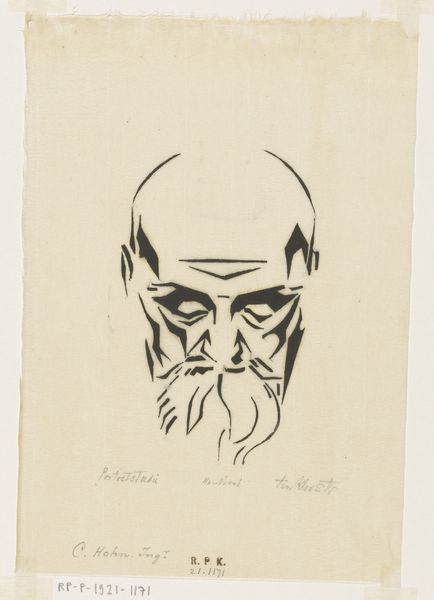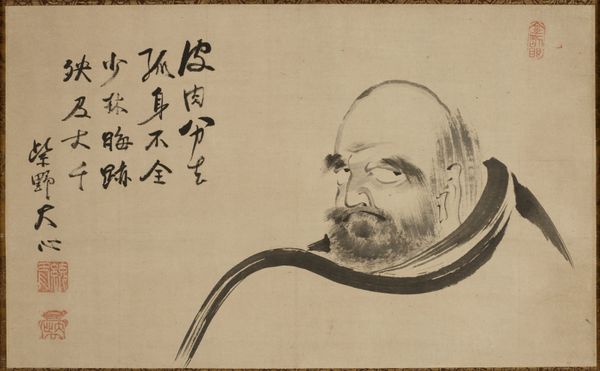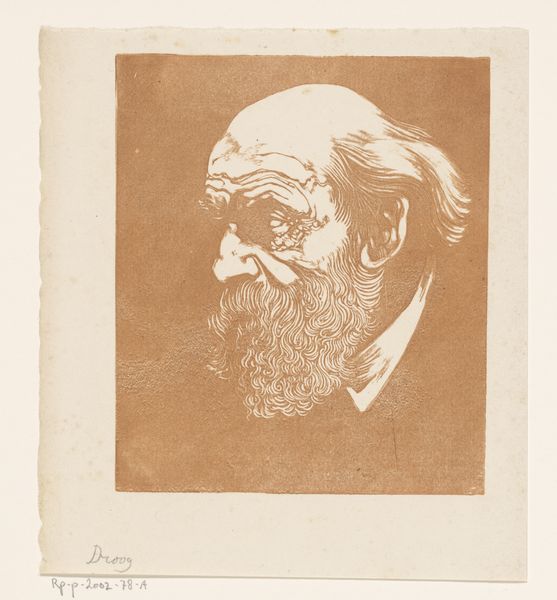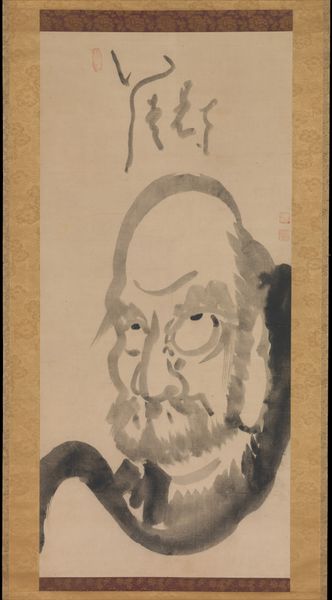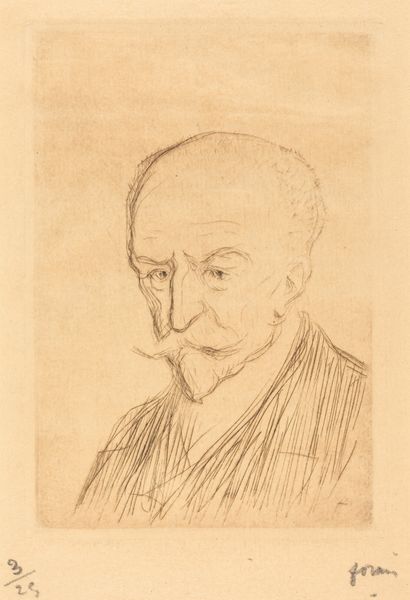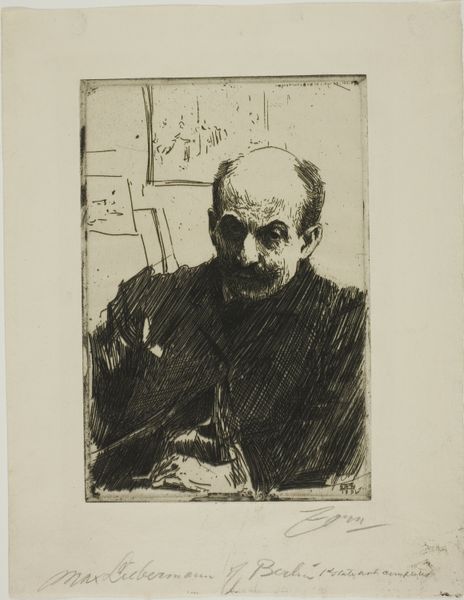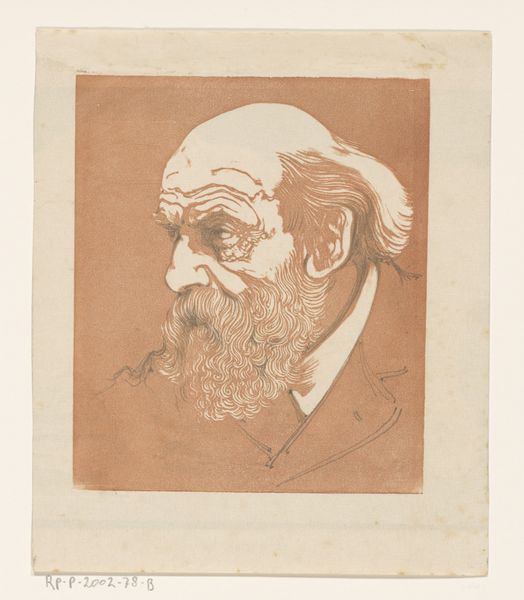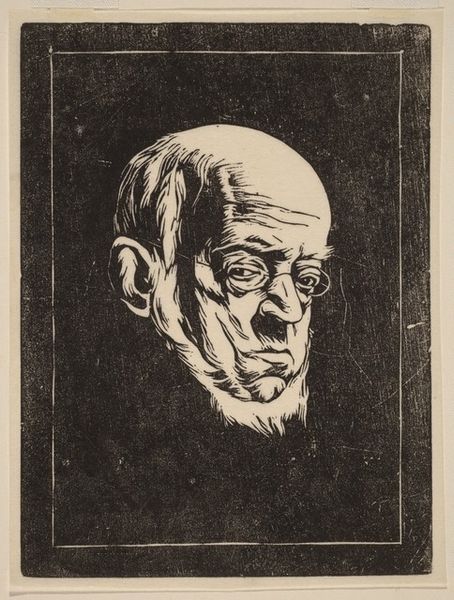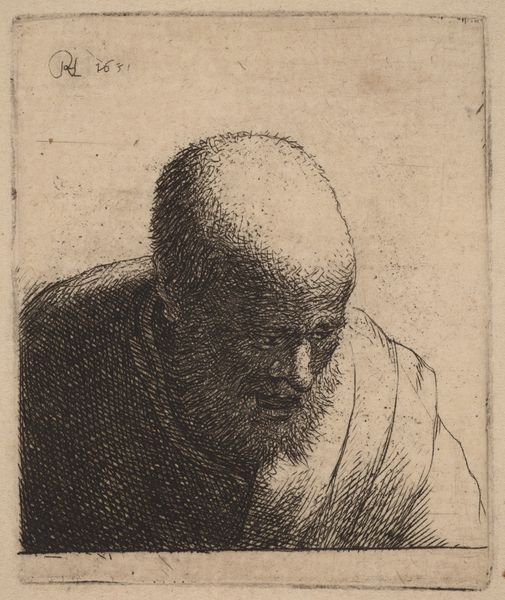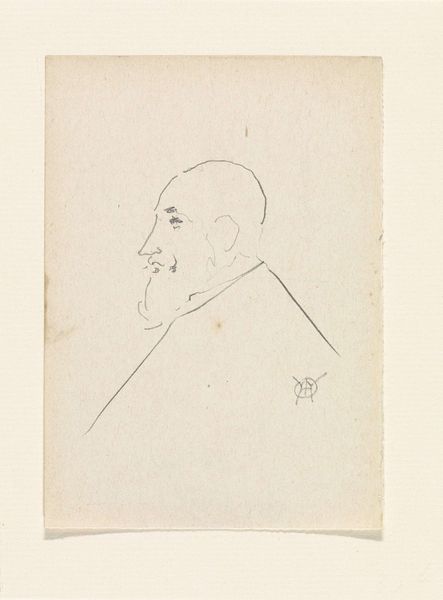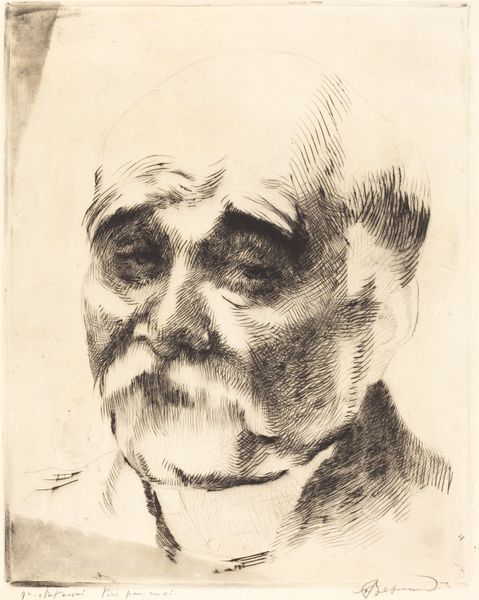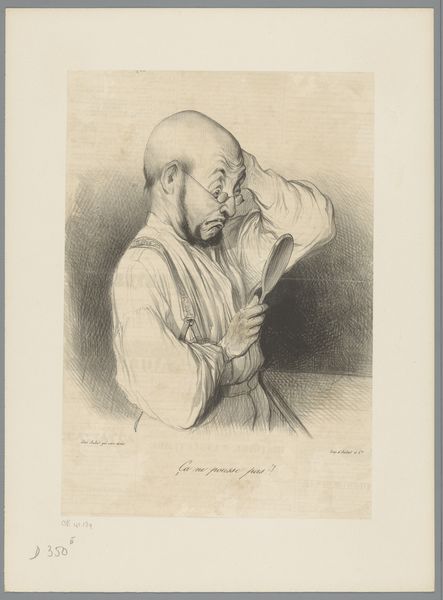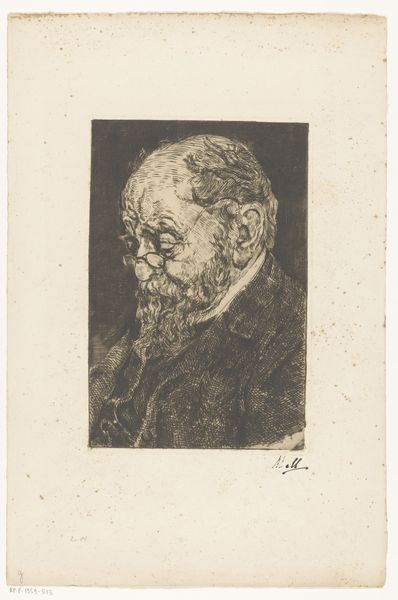
print, woodblock-print, woodcut
#
portrait
#
art-nouveau
# print
#
caricature
#
woodblock-print
#
woodcut
Dimensions: height 290 mm, width 208 mm
Copyright: Rijks Museum: Open Domain
Editor: This is Félix Vallotton's "Portrait of Pierre-Cécile Puvis de Chavannes," created in 1898 using woodcut. The stark black and white is really striking, almost severe. What do you make of it? Curator: It's a powerful image, isn't it? Vallotton was known for his woodcuts, which were quite influential in printmaking and their graphic directness offered commentary on social and political subjects of the era. Given its Art Nouveau context, what statement might be embedded here, regarding public figures and the burgeoning commercial art world? Editor: That's fascinating. So, it's not just a portrait; it's engaging with larger issues around public image and art’s function in society? Curator: Precisely. Look at the unflinching depiction, the almost caricatured features. It's a deliberate choice to portray Puvis de Chavannes, a well-established academic painter, in this manner. This stark representation raises questions about the artist's role in shaping public perception and challenging established artistic norms. Consider how this subverts traditional portraiture and what Vallotton might be implying about the subject's status. Editor: I see what you mean. It’s not glorifying him, it almost feels like a critique. Do you think Vallotton aimed to challenge the art establishment with this image? Curator: Absolutely. The use of a bold, almost crude medium like woodcut for a portrait of a prominent figure directly challenges the refined oil paintings of the Academy. Vallotton uses print to democratize the image but also destabilizes the authority and image of its sitter through caricature. It speaks to broader anxieties and transformations within the art world and the evolving role of public figures in fin-de-siècle Europe. Editor: This portrait feels a lot more subversive now than it did at first glance. Thank you, that puts it in a totally different light! Curator: And hopefully encourages thinking critically about art's role in shaping culture and perception!
Comments
No comments
Be the first to comment and join the conversation on the ultimate creative platform.
